
When you’re thinking about the integrity of your home, the question, ‘How long does a roof last?’ is one that might frequently cross your mind. Roofs are pivotal for shelter and protection, and they wear out over time. On average, a roof’s lifespan can range from 15 to 50 years, influenced by factors such as material, installation quality, weather conditions, and maintenance practices. This article explores these elements to give you a clear understanding of how each affects your roof’s durability and provides practical advice to ensure its longevity.
What Affects a Roof’s Lifespan?
While many homeowners might believe that all roofs are created equal, the truth is far from it. Numerous factors play a role in determining a roof’s lifespan. Some of these factors include:
- The type of roofing material
- The quality of the installation
- The climate
- The slope of the roof
All of these factors can significantly impact how long your roof lasts.
And let’s not forget about regular maintenance! Keeping your roof in good condition can drastically extend its life, saving you significant time and money in the long run.
Weather Conditions May Affect the Entire Roof
It’s no secret that weather conditions can have a significant impact on your roof. After all, your roof is your home’s first line of defense against the elements. Extreme weather conditions and strong storms can potentially damage the roof and reduce its lifespan. This makes it vital to choose durable materials and ensure proper installation.
For instance, asphalt shingles, a popular roof materials choice, can withstand various weather conditions, but extreme temperatures and storms can accelerate their wear and tear. So, if your area frequently experiences severe weather, it’s wise to consider this when choosing your roofing material.
Damage Affects How Long A Roof Lasts
Damage to your roof isn’t just an aesthetic issue—it can have real implications for the lifespan of your roof. Various factors cause damage, including weather, falling debris, or the natural aging process. Addressing these promptly can prevent minor issues from worsening. Common roof damage types include:
- Missing shingles, leading to leaks and potential water damage
- Cracked or curling shingles, often suggesting roof aging
- Compromised flashing, risking water ingress and structural issues
- Sagging sections, potentially indicating structural concerns
To prevent further damage and maintain your roof’s longevity, it’s essential to remedy any damage quickly.

Installation From a Quality Roofing Company
Just as you’d expect with any other major home improvement project, the quality of your roof installation plays a significant role in how long your roof lasts. Proper installation by experienced professionals can extend the lifespan of a roof, whereas poor installation may lead to premature deterioration. Faulty installation workmanship is a common cause of premature roof failure, emphasizing the importance of entrusting roof installation to licensed, bonded, and insured professionals.
So, when getting a new roof, make sure to choose a reputable roofing contractor with a track record of high-quality installations.
Hiring a Roof Inspector
If you think that roof maintenance is all about cleaning gutters and removing debris, think again. One of the most effective ways to prolong the life of your roof is to hire a professional roof inspector. Regular inspections can help identify and address issues early, preventing minor problems from turning into costly repairs.
Professional roof inspectors often identify issues that may not be visible to the untrained eye, such as compromised roof flashing or early signs of rot. So, make it a point to schedule regular roof inspections at least once a year to keep your roof in top shape and extend its lifespan.
Proper Ventilation
Proper ventilation is a key determinant of a roof’s lifespan. It prevents the damaging effects of moisture buildup and excessive heat. Inadequate ventilation can cause:
- Attic condensation
- Wood rot
- Mold growth
- Insulation issues
Ensuring good attic airflow is essential for roof longevity.
Roof Pitch
The pitch, or slope, of your roof can also play a significant role in your roof’s lifespan. Roofs with higher pitches typically last longer because they can deflect heavy rains and hail more effectively than flat or low-sloped roofs.
On the other hand, flat and low-sloped roofs have a shorter lifespan as they don’t easily shed water during heavy downpours, leading to more rapid degradation and potential leaks. So, if you’re contemplating a new roof, consider the pitch as an essential factor that can affect its lifespan.
A Roof’s Life Expectancy Depends on its Materials
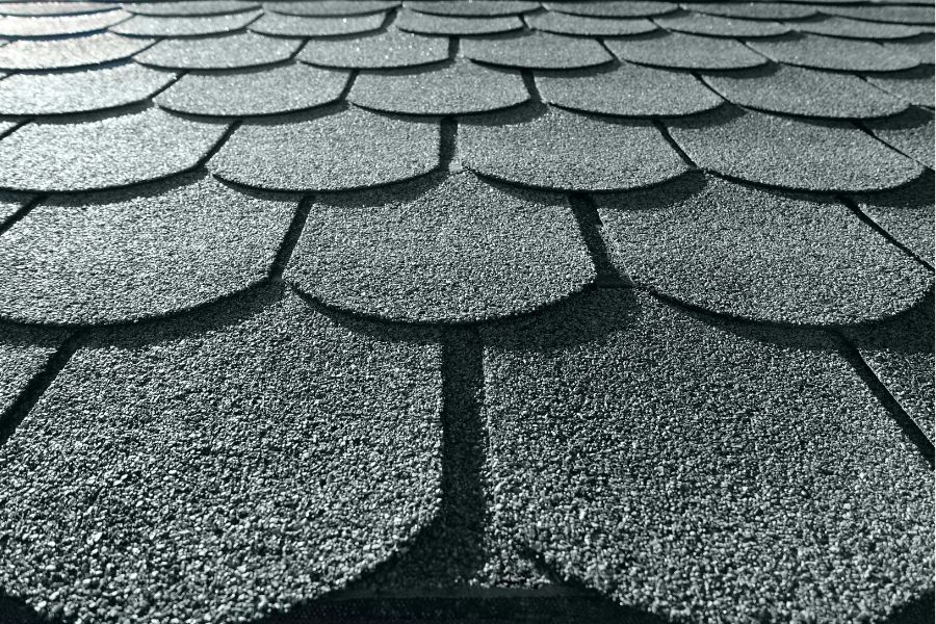
The materials you choose for your roof are significant to its longevity. Options like asphalt shingles typically last 15-20 years, while metal, tile, slate, and concrete can last much longer. Synthetic options like Da Vinci tiles offer extended warranties and can mimic other materials. Choose based on lifespan and maintenance needs.
Architectural Asphalt Shingles
- Lifespan: Typically lasts 15 to 20 years, depending on factors such as climate, quality, and maintenance.
- Types: Traditional 3-tab shingles and architectural shingles offer different levels of durability and aesthetic appeal.
- Maintenance Tips: Regular inspections for signs of damage, such as curling, cracking, or missing shingles, can help extend the lifespan of an asphalt shingle roof.
Metal Roofs
- Lifespan: Metal roofs have a longer lifespan of 40 to 70 years or more, making them a durable and long-lasting option.
- Types: Options include steel, aluminum, copper, and zinc, each with varying durability and aesthetic characteristics.
- Benefits: Metal roofs are resistant to fire, rot, insects, and mildew, and they offer excellent durability against extreme weather conditions.
- Maintenance Tips: Periodic inspections and promptly addressing any scratches or corrosion can help maintain the integrity of a metal roof.
Concrete Tiles & Clay Tile Roofs
- Lifespan: Concrete and clay tile roofs can last 50 years or more with proper maintenance.
- Benefits: Tile roofs are durable, fire-resistant, and offer excellent insulation properties.
- Maintenance Tips: Regular inspections for cracked or broken tiles, as well as cleaning to prevent moss and algae growth, can help prolong the lifespan of a tile roof.
Wood Shingles
- Lifespan: Wood roofs typically last 20 to 40 years, depending on maintenance and climate factors.
- Benefits: Wood roofs offer a natural, rustic appearance and excellent insulation properties.
- Maintenance Tips: Regular cleaning, treating for mold and mildew, and replacing damaged shakes or shingles can help extend the life of a wood roof.
Wood Shingles
- Lifespan: Wood roofs typically last 20 to 40 years, depending on maintenance and climate factors.
- Benefits: Wood roofs offer a natural, rustic appearance and excellent insulation properties.
- Maintenance Tips: Regular cleaning, treating for mold and mildew, and replacing damaged shakes or shingles can help extend the life of a wood roof.
Common Ways to Extend a Roof’s Lifespan
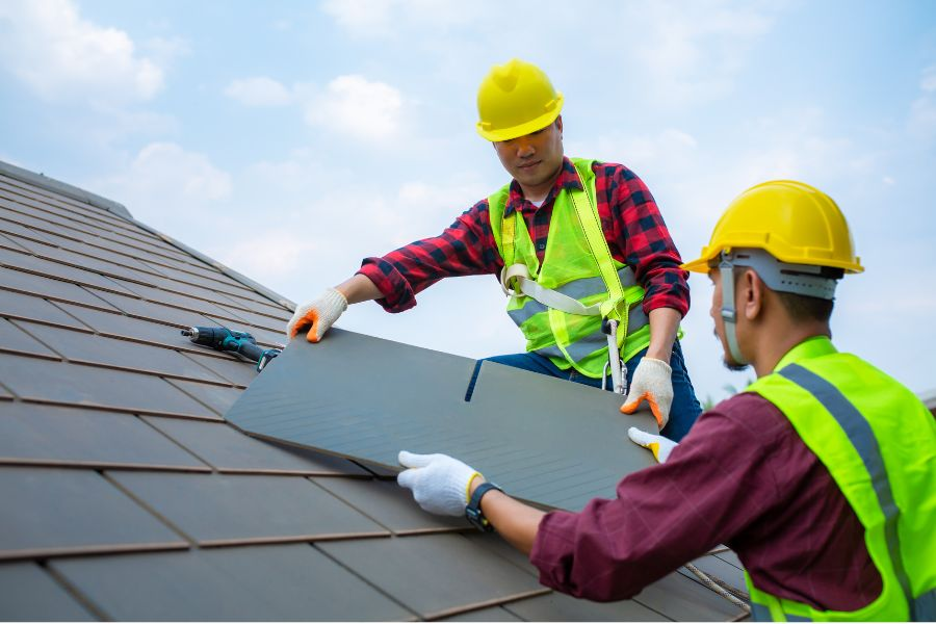
Repair Roof Leaks
Causes of Roof Leaks:
Roof leaks can originate from a number of sources, often stemming from the natural wear and tear of roofing materials over time. Poor installation techniques can also leave your roof vulnerable to water infiltration, especially if the roof’s flashing is not properly secured. Flashing is a key component designed to create a water-resistant barrier at the joints where water ingress is most likely. Without it, your home is at risk of serious water damage.
Solutions for Roof Leaks:
Promptly identifying and remedying roof leaks is crucial for protecting your home from water damage. Regular inspections can help catch leaks early before they become larger issues. Once a leak is detected, it’s essential to repair it immediately to prevent further damage. A consistent maintenance routine, including checking for damaged or missing shingles and ensuring that flashing is intact and functional, plays a vital role in extending the life of your roof and maintaining its overall durability.
Ensure Proper Attic Ventilation
Causes of Ventilation Problems
Proper attic ventilation is important for roof maintenance. In hot climates, a poorly ventilated attic can overheat, damaging the roof structure and increasing energy costs. In cold climates, it can lead to damaging condensation. These issues can shorten your roof’s life and negatively affect home air quality.
Ventilation Solutions
Proper attic ventilation is essential for extending your roof’s life. To improve airflow, install soffit vents for cool air intake and ridge or turbine vents for hot air exhaust, creating a balanced air exchange. Additionally, ensure insulation doesn’t obstruct vents and is adequate to maintain even temperatures. These steps prevent moisture damage and overheating, safeguarding your roof’s condition.
Common Ways to Extend a Roof’s Lifespan
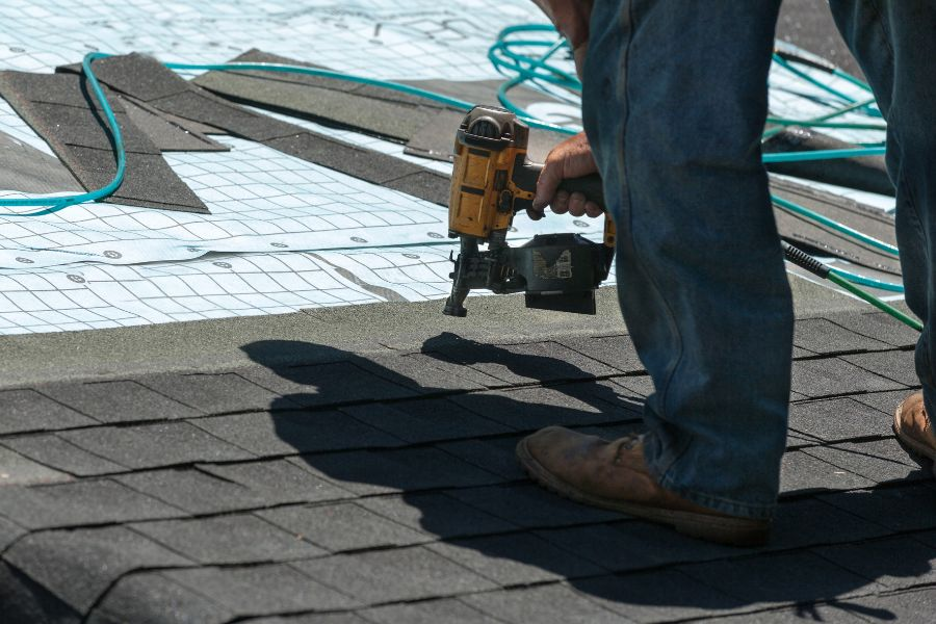
Signs a Roof Needs Replacing
So, how do you know when it’s time to replace your roof? Certain signs can indicate that your roof may be past its prime. These include:
- The age of your roof (if it’s over 20-30 years old)
- Extensive damage (like curling, cracked, or missing shingles)
- Frequent repairs
- Increasing maintenance costs
If you notice any of these signs, it may be time to consider replacing your roof. Call a professional and discuss the possibility of a roof replacement.
Installation Quality
Quality installation is important when it comes to roof replacement. From assessing specific needs such as roofing material and design preferences to ensuring that all components of the roof are correctly installed, attention to detail is essential. A poorly installed roof can lead to numerous problems down the line, including leaks, structural damage, and a shortened lifespan.
So, when replacing your roof, make sure to choose a reputable roofing contractor with a track record of high-quality installations.
Professional Assistance
Hiring experienced roofing contractors ensures proper installation and maximizes the lifespan of the new roof. A professional roofer will offer a comprehensive guide to roof installation, ensuring a quality service. They will help you choose the right materials for your roof, considering factors such as your home’s structure, the local climate, and your budget. They will also ensure that the installation is done correctly to prevent any future problems.
So, when it comes to roof replacement, professional assistance is not just recommended – it’s essential.
Type of Materials
The roofing material significantly influences a roof’s longevity. Key options for roof replacement include:
- Asphalt shingles: Affordable and versatile, but with a shorter lifespan.
- Metal: Highly durable with a variety of styles, lasting decades.
- Tile: Durable with a classic look, ideal for longevity.
- Wood shakes: Offer a rustic appearance but require consistent upkeep.
- Slate: Beautiful and long-lasting, though costly and needing expert installation.
Choosing the right material involves balancing durability, aesthetics, and maintenance.
Roofing Contractor’s Warranty
A reputable roofing contractor will offer warranties on their work, which can include both labor and materials, providing homeowners with reassurance and protection against future issues. Such a warranty can give you peace of mind, knowing that if anything goes wrong due to the workmanship, you’re covered.
So, before choosing a contractor for your roof replacement, make sure to ask about their warranty policy.
Manufacturer’s Warranty
In addition to the contractor’s warranty, you should also consider the manufacturer’s warranty for the roofing materials being used. These warranties can vary and offer different levels of protection. For instance, most tile warranties cover the product for 50 years, indicating a low rate of claims due to poor quality or lack of durability.
Such warranties can provide added assurance about the durability and longevity of your new roof.
How Long Does a Roof Last Made of Asphalt Roof Shingles?
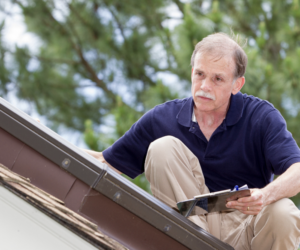
If you’ve chosen asphalt shingles, expect a lifespan of 15 to 30 years. Lifespan varies due to climate, shingle quality, and maintenance. Signs like curling or missing shingles indicate repair needs. Regular checks and timely repairs are essential for longevity.
Asphalt Shingle Roof vs Other Roof Types
Asphalt shingles are favored for their cost-effectiveness and simple installation, while metal roofs, though pricier initially, offer longevity and low maintenance, lasting 40 to 70 years. Choosing roofing materials involves weighing both immediate costs and future upkeep.
Metal Roof Shingles
If you’re considering metal roof shingles, remember they last up to 70 years and are eco-friendly, with high recycled content. They’re heavier and need careful installation but are a sustainable choice with long-term benefits despite the higher initial cost.
How to Tell if Your Asphalt Shingles are Damaged
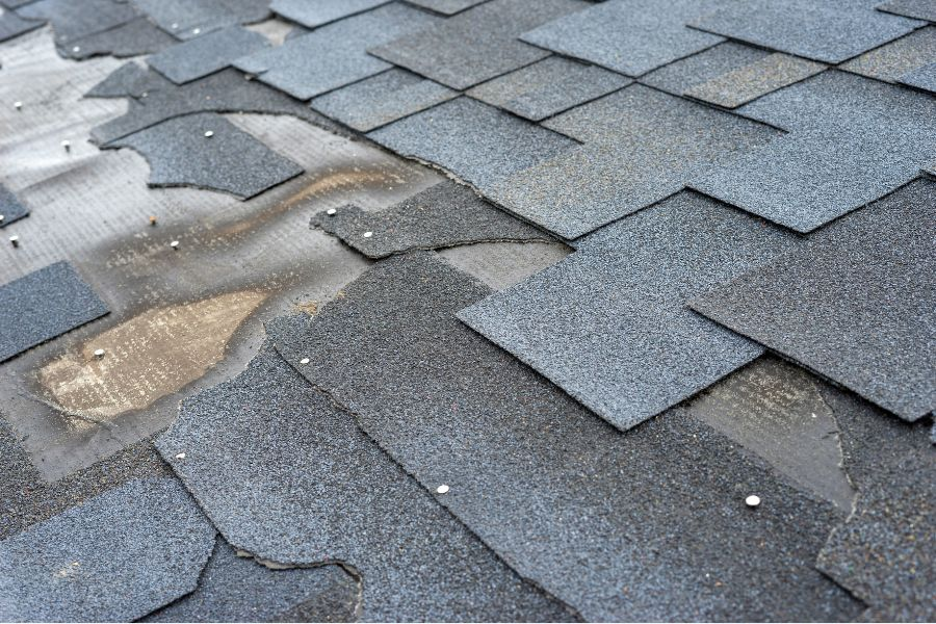
Knowing how to spot damage to your asphalt shingles can help you address issues before they escalate. Signs of damage include:
- Curling
- Cracking
- Missing shingles
- Bald spots on shingles, where granules have worn away
These signs can indicate that the shingles are nearing the end of their lifespan. If you notice any of these signs, it’s crucial to get them fixed as soon as possible to prevent further deterioration.
Remember, early detection of damage can prevent minor issues from turning into major ones, saving you significant time and money in the long run.
When Should I Consider Roof Replacement?
Signs that suggest a roof replacement might be necessary include:
- The age of the roof (if it’s over 20-30 years old)
- Extensive damage (like curling, cracked, or missing shingles)
- Frequent repairs
- Increasing maintenance costs
If your existing roof is showing any of these signs, it might be time to consider a roof replacement.
Remember, an aging or damaged roof can lead to more serious problems like leaks and structural damage, so it’s essential to address these issues promptly with roof repairs.
What are the signs that my roof needs to be replaced?
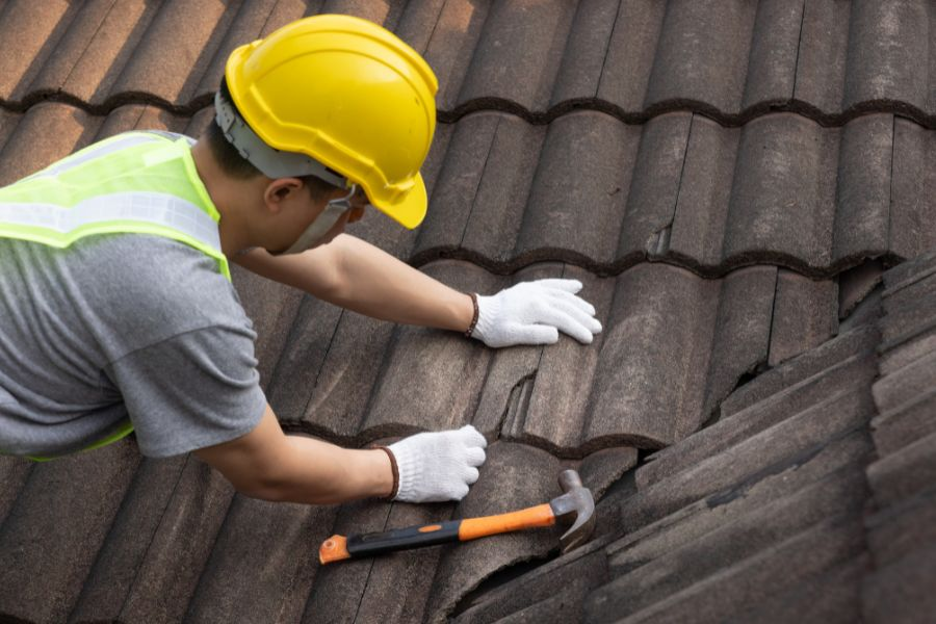
If you’re unsure whether your roof needs replacing, there are several signs to look out for. These include shingle damage (such as curling, cracking, or missing shingles), leaks in your home, and the age of your roof. Age is a significant factor – if your roof is over 20-30 years old, it might be time to consider a replacement.
Other signs include sagging areas on your roof, indicating potential structural issues, and growths such as moss or algae, which can indicate trapped moisture. If you notice any of these signs, it’s a good idea to call a professional roofing contractor for a thorough inspection.
Conclusion
To maximize your roof’s lifespan and safeguard your home investment, it’s crucial to select materials known for their durability. Ensuring that professionals carry out the installation is equally important, as it lays the foundation for a long-lasting roof.
Regular maintenance and timely repairs are key to preventing minor issues from escalating. Keeping the roof clean from debris also contributes to its longevity. Promptly addressing any damage ensures that small problems don’t turn into costly repairs.
A well-maintained roof offers protection and contributes to the overall value and aesthetic appeal of your home.
